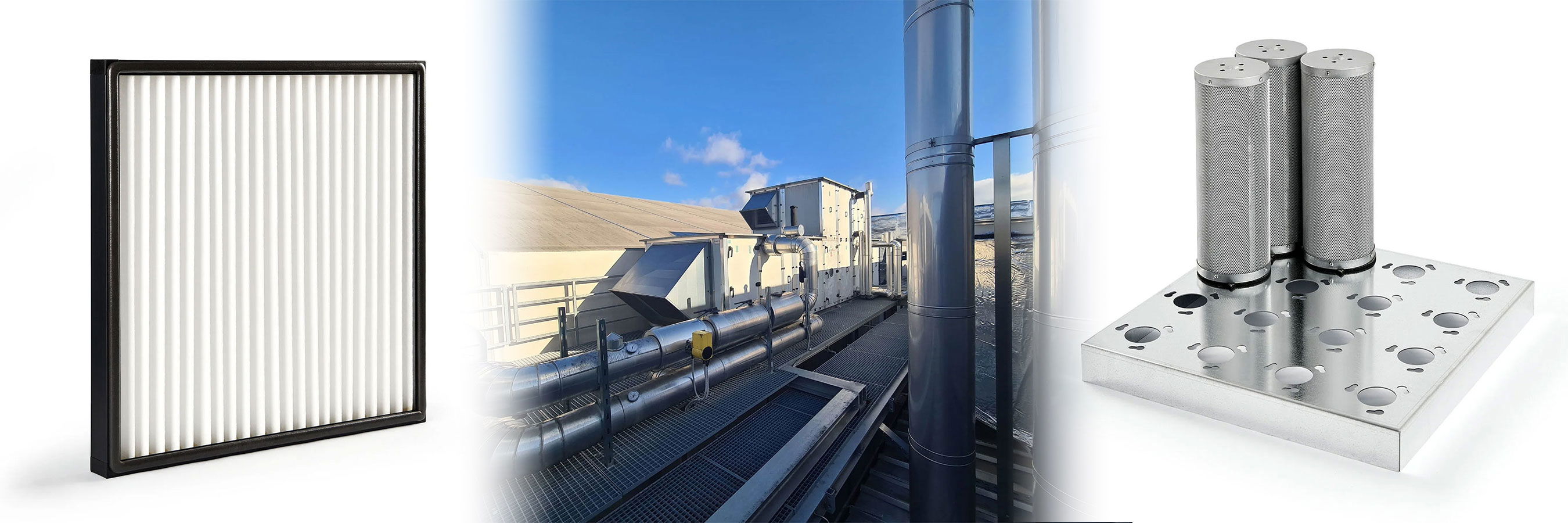SPATIAL FILTRATION

EKOFILTER FILTERS, HVAC EQUIPMENT AND ALL ASSOCIATED FILTRATION
Devices for ventilation, cooling, humidification, dehumidification and heating of air (air conditioners) for swimming pools, cinemas, shopping centers, hospitals (hygienic type), pharmacy and food industry, industrial and sports facilities, hotels and business buildings.
Filter classes according to ISO 16890
Unlike the EN 779 standard, which defines filter classes, the ISO 16890 standard classifies according to filter groups, evaluating the efficiency of the filter according to its retention of particles from 0.3 to 10 μm in size. The filter group PM1 includes particles of size ≤1 μm, PM2.5 includes particles of size ≤2.5 μm, and PM10 includes particles of size ≤10 μm.
For filter professionals, the key difference is clear: the old standard tests the retention of particles of only one size (0.4 μm). The new standard specifies retention across the particle size spectrum.
| Filter group | Particle size (μm) | Classification criteria |
| ISO ePM1 | 0.3 ≤ x ≤ 1 | Minimum efficiency ≥ 50 % |
| ISO ePM2,5 | 0.3 ≤ x ≤ 2.5 | Minimum efficiency ≥ 50 % |
| ISO ePM10 | 0.3 ≤ x ≤ 10 | Average efficiency ≥ 50 % |
| ISO Grobi | 0.3 ≤ x ≤ 10 | Average efficiency ≥ 50 % |
*ePM = particulate matter efficiency
Main differences between EN779 and ISO 16890 EFS / Engineering filtration systems
The main differences between EN 779 and ISO 16890 are in the approach to air filter testing and classification methods. This change came as the International Organization for Standardization (ISO) issued it as an effort to improve air quality in light of new studies, regulations and ever-increasing particulate matter (PM) pollution. The focus of the new standard is on fine dust and is described in great detail in extensive test procedures and classification methods.
